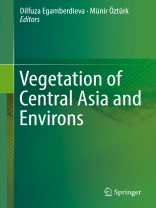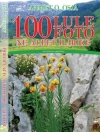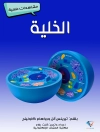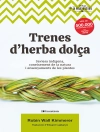Central Asia is a large and understudied region of varied geography, ranging from the high passes and mountains of Tian Shan, to the vast deserts of Kyzyl Kum, Taklamakan to the grassy treeles steppes.
This region is faced with adverse conditions, as much of the land is too dry or rugged for farming. Additionally, the rich specific and intraspecific diversity of fruit trees and medicinal plants is threatened by overgrazing, oil and mineral extraction, and poaching. Countless species from the approximately 20 ecosystems and 6000 plant taxa are now rare and endangered.
Traditional vegetation studies in this region are far from adequate to handle complex issues such as soil mass movement, soil sodicity and salinity, biodiversity conservation, and grazing management. However, data analysis using a Geographical Information System (GIS) tool provides new insights into the vegetation of this region and opens up new opportunities for long-term sustainable management. While vegetation planning can occur at a property scale, it is often necessary for certain factors, such as salinity, to be dealt with on a regional scale to ensure their effective management. GIS increases the effectiveness and accuracy of vegetation planning in a region. Such regional planning will also greatly increases biodiversity values.
This book systematically explores these issues and discuses new applications and approaches for overcoming these issues, including the application of GIS techniques for sustainable management and planning. Professional researchers as well as students and teachers of agriculture and ecology will find this volume to be an integral resource for studying the vegetation of Central Asia.
Daftar Isi
1. Spatio-temporal Assessment of Vegetation Trends in the Post-Soviet Central Asia.- 2. Drought variability and land degradation in Central Asia: assessment using remote sensing data and drought indices.- 3. NDVI-based monitoring a long term vegetation change dynamics in the drylands of Central Asia.- 4. Deforestation – A Continuous Battle: Case Study from Central Asia and Other Countries.- 5. Vegetation Classification and Habitat Mapping of Dachigam National Park, Kashmir, India.- 6. Vegetation Diversity of Kashmir and its Sustainable Use.- 7. Medicinal Plants of Tajikistan.- 8. Medicinal Plants of Uzbekistan and Their Traditional Use.- 9. Current State and Prospects for Studies on the Diversity of Medicinal Flora in Kazakhstan.- 10. Medicinally Important Plants of Kazakhstan.- 11. Causes and Impacts of Land Degradation and Desrtification: Case Study from Kazakhstan.- 12. Assessment of the current plant diversity status in Kazakhstan.- 13. Ecology and Environmental Aspects of “Makmalzoloto” Gold Mining Area-Kyrgyzstan.- 14. Floodplain forest mapping with Sentinel-2 imagery: Case study of Naryn River, Kyrgyzstan.- 15. Potential Impacts of Climate Change on Plant Diversity of Sary-Chelek Biosphere Reserve in Kyrgyzstan.- 16. Plant Diversity of Ala-Archa National Park in Kyrgyzstan with Emphasis on its Economical Potential.
Tentang Penulis
Dr. Dilfuza Egamberdieva graduated with a degree in biology from the National University of Uzbekistan and received her Ph D in Agricultural Sciences from the Humboldt University of Berlin, Germany in 2000. She conducted her postdoctoral studies at the Helsinki University of Finland, University of Florence, Manchester Metropolitan University, and Leiden University of Netherlands. She has a long-term experience in plant and soil biotechnology research and has collaborated widely with scientists across the world. She served as international project coordinator in her home country on a variety oftopics, including soil improvement, crop productivity, food security and sustainable management of natural resources. She is member of the Asian PGPR Society for Sustainable Agriculture. Dr. Egamberdieve is the recipient of numerous fellowships and awards, including the UNESCO-L’OREAL Fellowship for Women in Science, Alexander Von Humboldt Fellowship. In 2012 she recieved the TWAS Prize in Agricultural Sciences for her contributions to the study of plant-microbe interactions in stressed environments. She is a member of several journal editorial boards, the author of four books, and co-author of over 100 publications related to plant nutrition, agricultural biotechnology and soil fertility.
Dr. Münir Öztürk (Ph.D., D.Sc.) has served at the Ege University Izmir, Turkey for 50 years.. His fields of scientific interest are plant ecophysiology, medicinal and aromatic plants, conservation of plant diversity; biosaline agriculture and crops, and pollution and biomonitoring. He has over 450 publications to his credit, including 42 books, 68 book chapters and nearly 200 papers in impact factor journals. He currently serves as Vice President of the Islamic World Academy of Sciences. He has received fellowships from the Alexander von Humboldt Foundation, Japanese Society for Promotion of Science, and National Science Foundation (USA). Dr. Ozturk hasserved as Chairman of the Botany Department and Founding Director of the Centre for Environmental Studies at the Ege University in Izmir, Turkey., He has also served as Consultant Fellow for the Faculty of Forestry at Universiti Putra Malaysia, Malaysia, and as Distinguished Visiting Scientist for the ICCBS, Karachi University, Pakistan.












